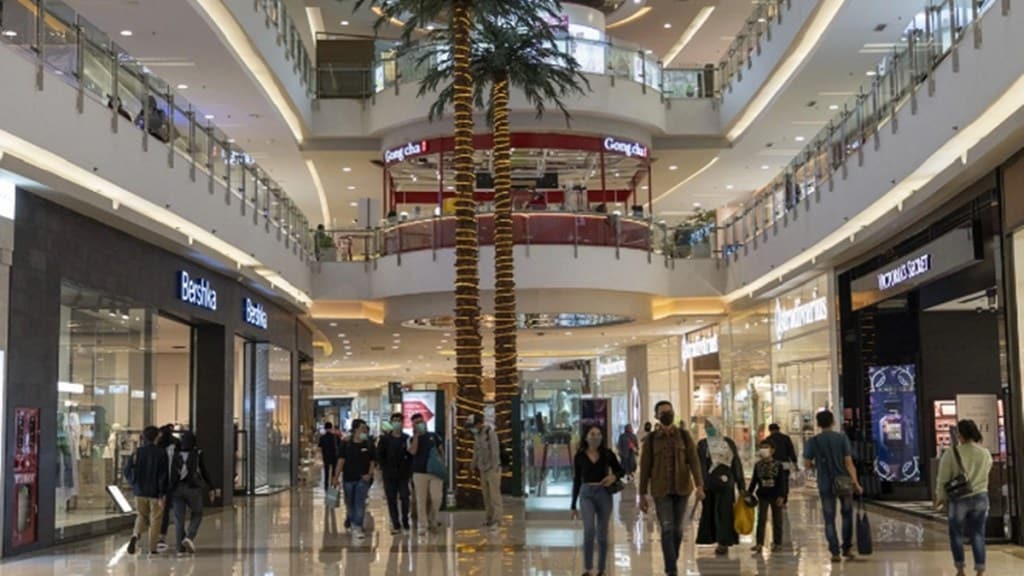By Shubhra Tandon and Kritika Arora
A visit to Sarojini Nagar in Delhi ahead of Diwali reveals bumper-to-bumper traffic and shoulder-to-shoulder crowd. It’s as if people are trying to make up for the two years lost during the pandemic. But the crowded market is where the comparison with the pre-pandemic times ends. People are not willing to splurge, opting for cheaper alternatives and second-hand goods. The market is usually thronged by people belonging to the middle class and lower middle class.
Kamla Bhasin (50), a Diwali shopper at the Sarojini Nagar market, sums up the sentiment: “I have not shopped as much because everything is so expensive. My budget was overshot with just one dress,” she said, complaining that prices are at least 50% more than 2019. “I have spent more but my actual shopping has been less this time,” she added.
Kuldeep Singh Sawhney, president, Sarojini Market Shopkeepers’ Association, said: “The crowd is such that over the weekend, the entry from the metro station had to be stopped and all the six entries of Sarojini market had to be shut to control excessive crowding. People are spending and Diwali shopping is happening, but the purchasing power of customers has come down. I own a shoe shop, and before the pandemic, the maximum sales happened in the range of 2,000, but now it's500. Our earnings have fallen sharply.”
An owner of an electronics store said, “People come to the shop and look at the products, ask for discounts, but then go and buy online.” But then, the customer is king. “I wanted to buy small white goods or kitchenware as gifts but will now buy online. The shops are running discounts of 10-15%, but online is way cheaper,” said Sujata Khatri, who had come shopping for Diwali gifts for her office staff.
Mumbai’s Dadar market, too, is crowded, with both customers and hawkers selling Diwali goods, but shopkeepers echo the Delhi sentiment, saying that sales are only 60-80% compared with 2019. “People are coming, there is more crowd this time but business is not as before the pandemic. Dhandhe me farak hai, halka hai…it is 60-70% of 2019 or 2018,” said a dry fruit shop owner in the market.
An apparel shopkeeper in the same market said they used to keep the shop open till the early hours in the run-up to Diwali in the pre-pandemic times, but now they shut down before midnight. “Business is down, it’s not the same as before,” he said.
On the other hand, people in the upper economic strata are not shy of spending. Witnessing an over 130% pre-Covid growth in terms of demand and occupancy, DLF Malls has strengthened its portfolio by adding 130 unique brands across its retail and F&B categories in its eight premium and luxury properties in Delhi-NCR. “We expect to grow 15-20% month-on-month in October-December. Our luxury retail segment is growing between 150% and 170%,” said Pushpa Bector, executive director, DLF Retail, and head, luxury and shopping malls.
Another premium mall, Select Citywalk in New Delhi, is seeing a 7-8% growth in demand and increased footfalls this year. “Luxury shopping is back, so are the premium brand categories. Footfalls have increased, people are eager to shop and get entertained at physical shopping centres,” said Yogeshwar Sharma, CEO and executive director, Select Citywalk, Delhi.
Shoppers Stop MD and CEO Venu Nair told FE that footfalls in their stores and the online channel combined are 34% above the pre-pandemic levels. He added that the premium and lifestyle segments are doing well, having high threshold to absorb inflation.
Commenting on the festive season, Nitin Bir, vice-president, Infiniti Mall, Mumbai, said, “The slowdown induced by the pandemic is gradually diminishing and this year we have witnessed the festive spirit gain momentum. We have seen an increase in spending capacity for products as well as services. We are expecting steady growth in sales that will outgrow the numbers achieved since 2019. We expect an increase of approximately 30% in sales this year during the festive quarter.”


